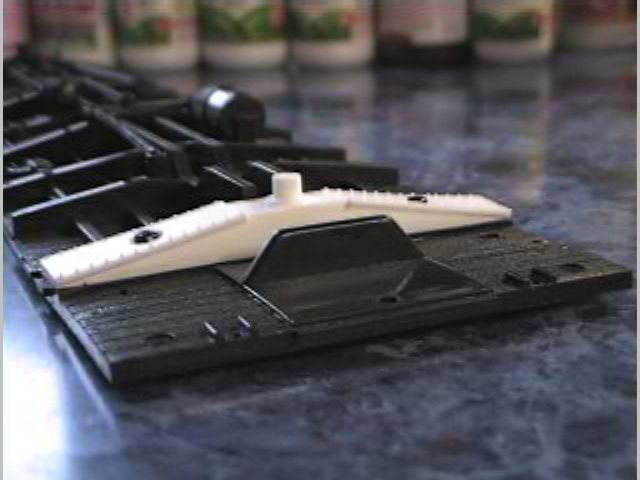Lowering Aristo Box Cars
I have enjoyed the detail on the Aristo Box Car, Stock Car and Reefer very much but the cars always seemed a little off to me when they were being pulled in a train. Then one day, squinting at a multiple car lash up, I noticed that the gondola cars, tank cars and flat cars all seemed to be sitting lower on the rails than the “house” cars. I decided to get out my trusty blueprints and ruler to see what was up.

I discovered that, after taking the calculator to the measurements and converting for 1/29 scale, the “house” cars were indeed sitting too high off the rails. As a matter of fact, they were 3/16 of an inch too high! In this scale that’s a lot. When I went back to look at the cars again it jumped right out at me and I saw way too much daylight under the cars for my liking. I decided to try to do something about it and ended up developing a nice method for getting good results. I thought maybe some of the rest of you might like to do it too.
The first thing that you will need to do is disassemble the whole car. Take the trucks and couplers off the floor then remove the floor from the car body. Set all these parts aside for now. We will only be working on the floor.
First let’s look at the Aristo freight car floor to get some idea of what it looks like right out of the box. Please note that the height of the bolster, to where the truck will sit, is 19/32nds. This dimension produces a car that is 3/16ths too tall.

Now let’s remove most of that bolster, leaving a thickness of about 1/16th of an inch. To do this, start by removing the two screws that hold the simulated wood plank floor on the inside of the car. Put them aside for re-use later. Remove the bolster using any method you are comfortable with but be sure to leave a smooth, level surface for the new bolster to sit upon. I clamp the floor in my milling machine and, with care, get the following results. (By the way, I now have a jig for this and can remove these bolsters in about 2 minutes per side so if you want me to do it, just email me and we will get it accomplished for you.)
Please note the two plastic screw lugs on the underside of the simulated wood planking that forms the visible part of the car floor. I leave these intact and you should too. These will figure prominently in our work. Using a #46 drill bit, drill through them, at the already existing screw holes, going all the way through the floor.
Now comes the neat part. I used some of my amateur machining ability and made a brass replacement body bolster to fit the bottom of the car. When I got it right, I learned how to make and RTV mold of the piece and cast duplicates using casting resin type plastics. I even found a way to include some cool rivet detail so that the replacement body bolster looks correct under the car. (I can make these available to anyone who is interested for a nominal charge or you can make your own.)

So now I take a couple of these cast replacement body bolsters and trial fit the car with them by setting them, one at a time, on top of the screw lugs we mentioned earlier and replacing the two screws removed earlier. See image.
You should note that the area where the truck will sit is now 3/16 of an inch closer to the floor making the car ride 3/16 lower. This makes the car measure right about 14 foot 11 inches tall, which matches blueprints for similar cars in my file.
You may finish the task with a little epoxy glue. Remove the bolster and carefully apply the epoxy. Replace the bolster and allow the glue to dry. When you’re finished, spray paint with flat black paint and install the trucks to test run your newly lowered, more realistic looking freight car.
All my Aristo house cars have been converted using this method and had their Bettendorf trucks improved, as described in one of my other articles. The result is a truly fantastic looking model freight train in 1/29 scale and my successes in this area have greatly enhanced my enjoyment of the Large Scale model railroading hobby. I hope it will do the same for you.
If you have any questions or comments about my methods, or about 1/29 model railroading in general, please Email me at lawrence_d_cooper@yahoo.com.
